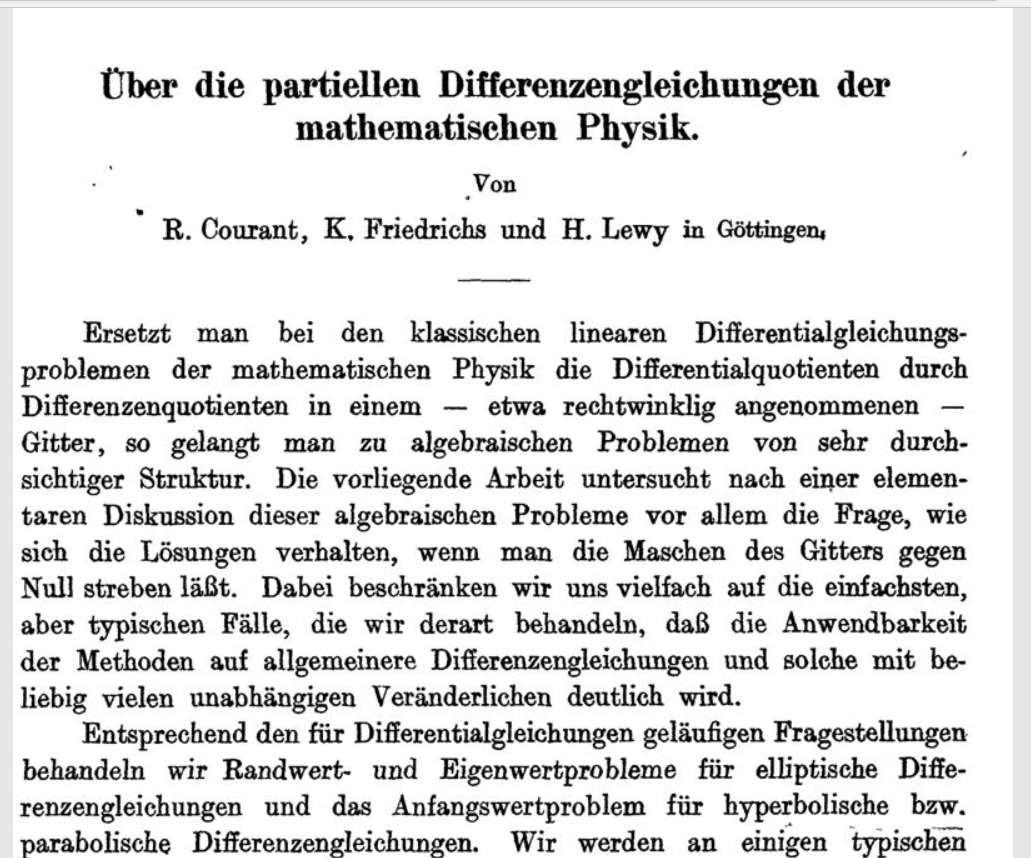This should be an easy one, since it’s based on a formula named for Courant / Friedrichs / Lewy, but like a lot of things in CAE there are nuances.
This number represents the time it takes for a sound wave to travel across a cell (or element): it depends on both the material properties of the cell and the cell’s dimensions. That’s it for the easy bit.
The Wikipedia starts by describing it as “a necessary condition for convergence while solving certain partial differential equations“. But convergence itself is a term that’s gloriously rich in meaning, so it’s not that straightforward. In the first place, the CFL Number can be important for both steady-state problems (that is, for problems whose solutions don’t change with time) and transient or time-dependent problems. Further, there can be time-dependent problems which converge just fine without your needing to worry about the CFL criterion. Next, when cells can have all sorts of shapes, what cell “dimensions” should we use? Since most grids are non-uniform, is there a single CFL number that characterises the entire grid?
There’s a lot to unpack there, more than can be covered in this post. All we’ll say here is that you should check your solver’s user-manual: if it says the CFL number is important, then it is. The smaller the cell (for example we may refer to the smallest of the cell’s dimensions) the lower its CFL number. And since this number is the upper limit for the time-step that the solver can use, a lower CFL makes the solution slower. Solvers can work around this, by the way. They can use different time steps for different parts of the grid, they can alter the time step as the solution progresses, and so on.
If this explanation doesn’t fill you with questions, you haven’t read it right. If you note that the CFL number is relevant only for explicit iteration methods, you’re probably OK. All other details should come from your solver’s documentation.
The 20 page English translation (available here) is worth reading even if you don’t fancy wrestling with the mathematics. It will give you an excellent idea as to how much fine print is involved in numerical methods in general.


